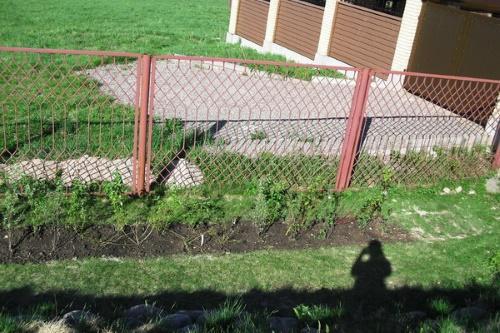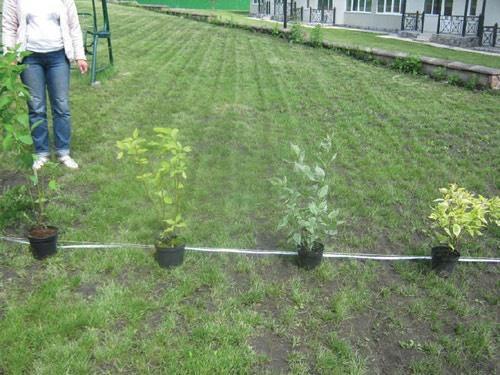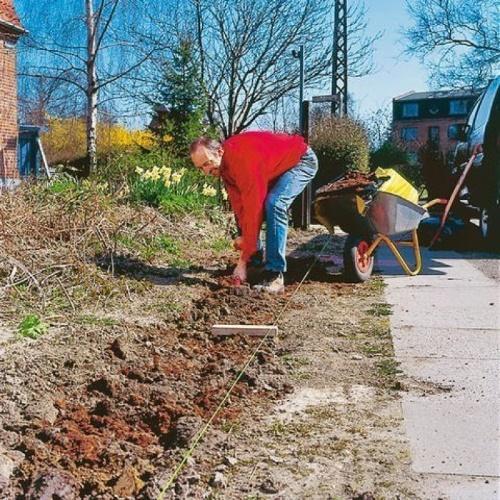Do-it-yourself hedge making: general step-by-step recommendations
 A hedge is not only a beautiful decorative look that gives the site the maximum resemblance to natural landscape design. It is also a reliable protection from prying eyes and cold gusts of wind, and if you plant crops with thorns - and from uninvited guests. How to make a hedge with your own hands so that the plantings fit harmoniously into the overall picture of the site, have a neat appearance and perform their protective function?
A hedge is not only a beautiful decorative look that gives the site the maximum resemblance to natural landscape design. It is also a reliable protection from prying eyes and cold gusts of wind, and if you plant crops with thorns - and from uninvited guests. How to make a hedge with your own hands so that the plantings fit harmoniously into the overall picture of the site, have a neat appearance and perform their protective function?
TO planting a hedge in the southern regions it is best to start in the fall, but closer to the north it is worth postponing work to the spring, otherwise the seedlings will not have time to take root in the winter and will die.
General principles of creating a "living wall"
Before you start planting plants, it is worth carrying out preparatory measures, namely:
- Decide on the place of such a fence... Most crops prefer sunny areas where they thrive. This is especially important to consider when choosing flowering crops. If the selected place is in shade, you need to give preference to plants that can survive in partial shade conditions.
- Make markup... To prevent the decorative fence from wagging around the entire site, it is better to hammer the pegs on both sides in the chosen place and pull a rope between them.

- Prepare the soil... The place of the planned planting of seedlings must be freed from weeds and dug up. It also does not hurt to apply fertilizers for digging in full, scattering them over the site, or to do it directly at the time of planting, adding them to each hole with a bush.

- Plant seedlings... The planting method depends on the type of crop. You can immediately dig a trench along the rope or separate holes for each seedling. In general, an average of 50 cm should recede between the bushes, but when forming a hedge from trees, you need to double the distance.

- Mulch planting (to retard moisture evaporation and weed growth).

It will be possible to see the first results of your labor no earlier than three or five years from the moment of planting - so much time is needed for crops to grow up and give the outline of a hedge.
Features of the formation of a hedge
The easiest option would be to plant freely growing shrubs. They do not need shaping and are easy to care for: it is enough to water, fertilize and cut out damaged shoots on time. Among unpretentious and capable of growing independently crops, they are often used for hedges Japanese spirea, chubushnik, girlish grapes or derain.
If there is a desire to get a curly vegetable fence, then you need to choose shrubs with a dense crown, well branching and tolerating pruning (boxwood, cotoneaster, thuja, hawthorn). Each spring, they should be trimmed to the desired shape. In addition, during the season, additional pruning may be necessary to keep the growth of overly active branches out of the general hedge plan.